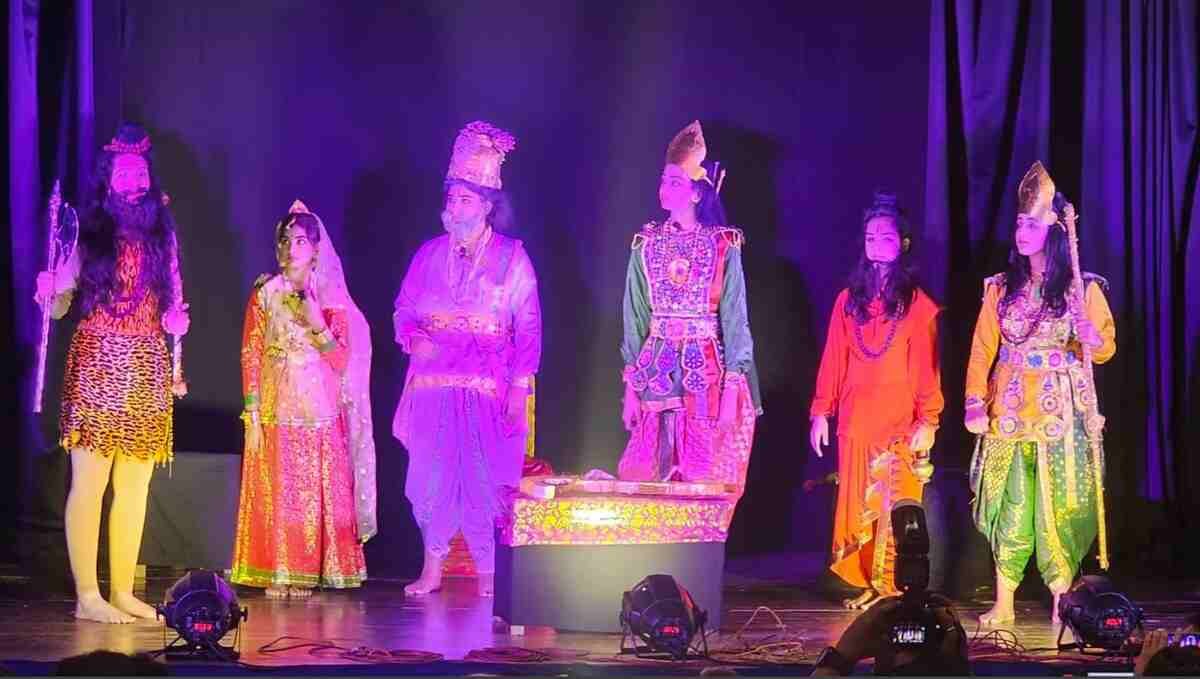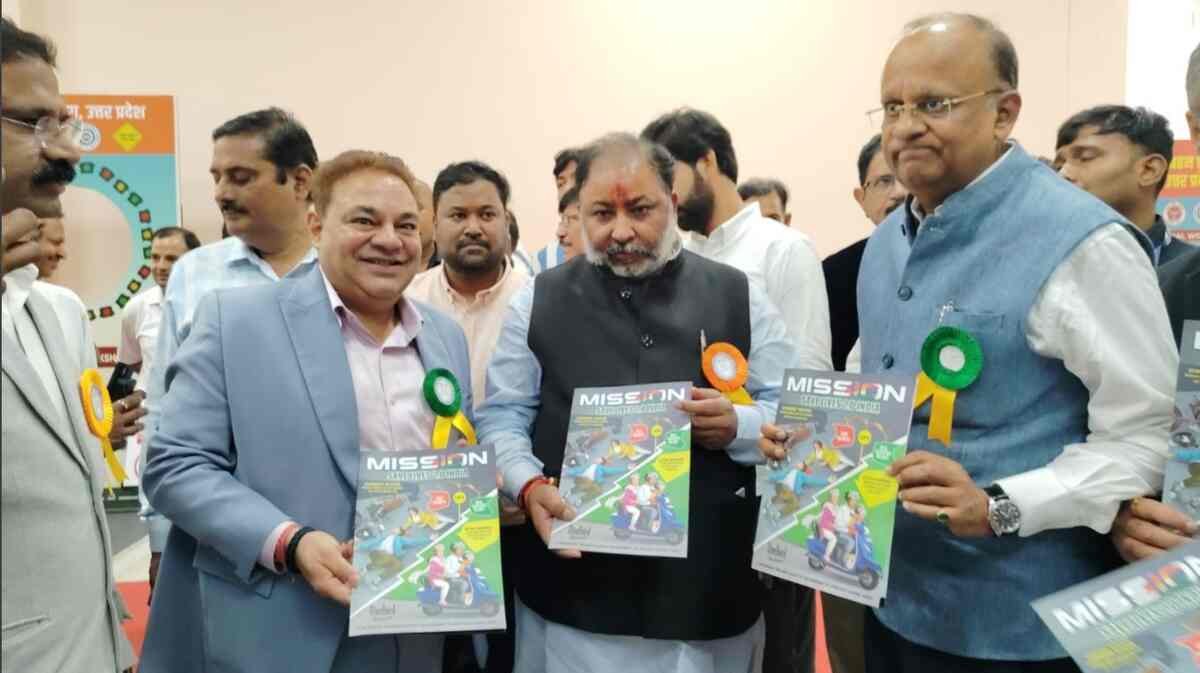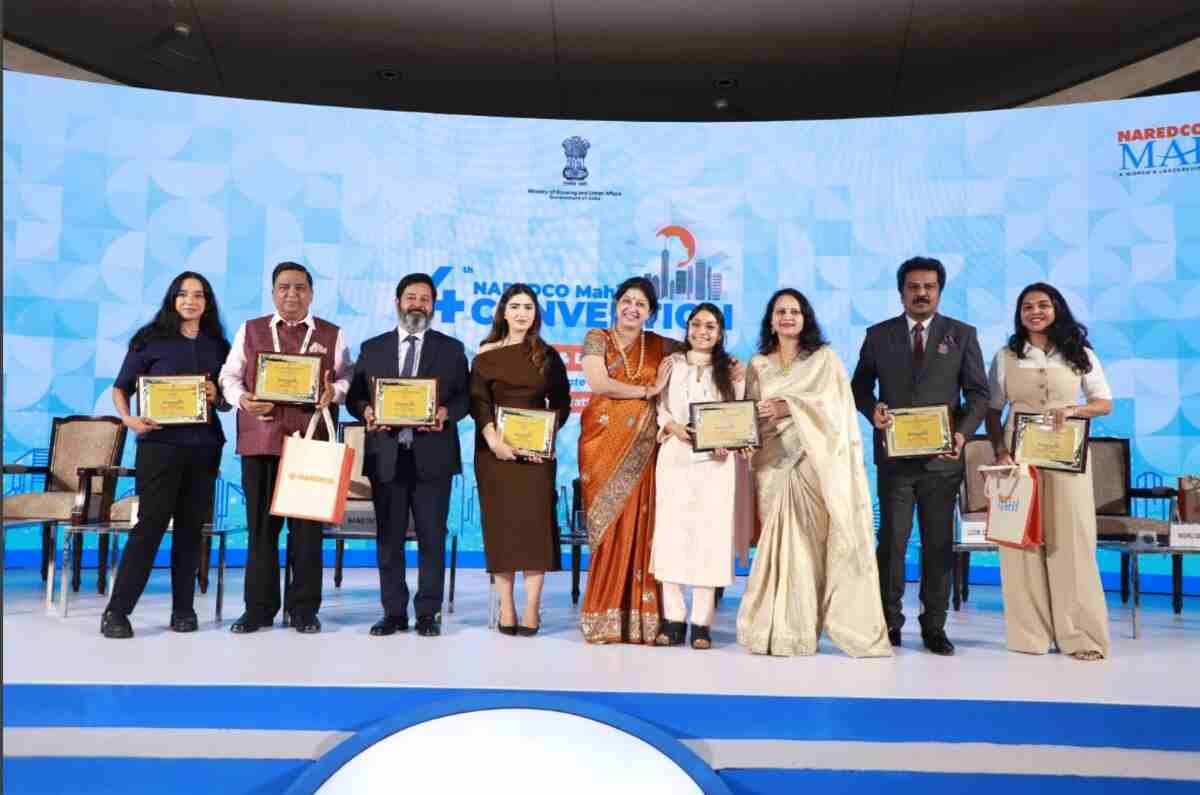Kolkata, July 2, 2025: ‘Stage Parichay 2025’ was jointly organized by ‘Sanskriti Parichay’ and ‘Next Scene’ in collaboration with Rotary Club Belur. This cultural event aimed to bring the depth of grandmother’s tales to the current generation through theatrical performances, storytelling, and presentations of Indian traditions.
In today’s digital age, when children are increasingly disconnected from family conversations and the importance of relationships, Stage Parichay reconnected them from screen to story, from swipe to shloka, and from passive viewing to active experience. The resonance of shlokas, the lessons of stories, and the captivating dialogues of this program touched everyone’s hearts.
The program began with Sanskrit shlokas, as the synchronized voices of children aged 4 to 14 filled the Rotary Sadan with sanctity. This was not merely an announcement; it was a touch of the soul.
Following this, children in various colorful attires presented two educational plays on stage, which conveyed moral values with humor and sensitivity. This was accompanied by the Ram-Parshuram dialogue, where the clash of dharma, restraint, and anger brought the entire narrative to life.
Next, a visionary presentation of Kalki Avatar was given, emerging as a courageous warning light in the current darkness.
Amidst these, an extraordinary moment arrived when a single innocent child presented the Navarasas exquisitely on stage. She brought to life the nine emotions of Shringar (love/beauty), Hasya (laughter), Karuna (compassion), Raudra (fury), Veera (heroism), Bhayanak (terror), Bibhatsa (disgust), Adbhuta (wonder), and Shanta (peace) solely through gestures and silence. The audience not only saw this artistic performance but felt it deep within.
On this occasion, Shubha Churiwal (Founder and mentor,Sanskriti Parichay) said, “This 19-year journey and the various performances on stage have always boosted children’s confidence. I see in my social environment how many skilled people become nervous as soon as they come on stage. Providing this platform to children is an effort to nurture them and awaken a sense of faith and patriotism. This event was successful due to the hard work of these children and our entire team.”
Kartikey Tripathi (Founder, CEO & Creative Head, Next Scene) stated, “Theater helps children build their values and identity not only on stage but also in their lives. Through Stage Parichay, we want to connect them with stories that possess both knowledge and wonder. In this age of screens, such experiences restore depth, discipline, and a culture of dialogue within children.”
Megha Narsaria( teacher Sanskriti Parichay and Production Manager of the show) , Ruchika Khetan ( teacher , Sanskriti Parichay) , Anusha Jalan Singhania (Co-founder & Director of Finance & Operations, Next Scene) and Rohit Basfor (Co-founder & Director of Finance & Operations, Next Scene) played crucial roles in making the event successful.
The most impactful part of the program was the debate between Kali and Kalki, a dialogue about destruction and rebirth. The entire hall fell silent and was stunned upon hearing questions from the children like, “Has the world gone beyond reform?” and “Is darkness preparing for light in the future?”
The program concluded with an emotional song like “O Kanha, ab to Murli ki,” which filled the entire atmosphere with emotion and devotion. Afterwards, all participating children were honored with certificates, acknowledging their enthusiasm and contribution.
Stage Parichay was not just a stage festival, but also the beginning of the children’s learning journey, encouraging the building of confidence, development of communication skills, expansion of imagination, collective cooperation, and discipline.
About Sanskriti Parichay:
Established in 2007 by Shubha Churiwal, this organization connects children with Indian culture through shlokas, bhajans, historical tales of our epics , and stage performances. Having educated over 4,000 students, it has presented more than 25 performances to date.
About Next Scene:
Next Scene is a new theater platform that brings Indian narratives to the new generation through powerful theatrical performances.









